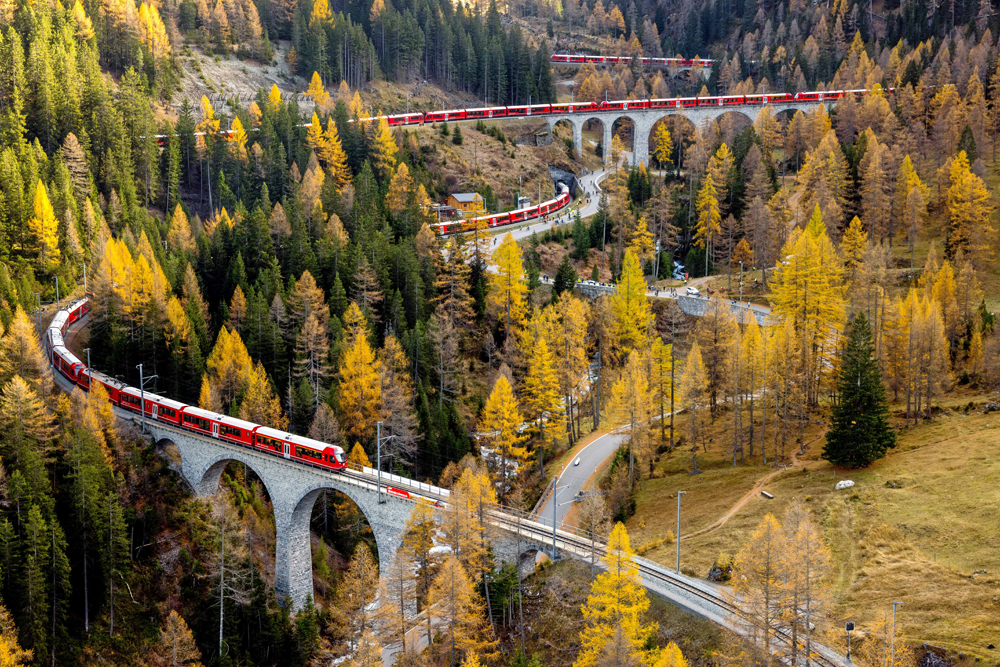
After months of preparations, Swiss meter gauge rail company Rhätische Bahn/Rhaetian Railway (RhB) set a new world record for the longest passenger train Saturday, Oct. 29, with a 100-car special train, formed of 25 identical electric multiple-unit trainsets.
The train ran on the world-famous UNESCO World Heritage ‘Albula/Bernina’ route from Preda to Bergün via its spiral tunnels, later crossing the famous Landwasser Viaduct before ending in Alvaneu. The record-breaking run was part of the celebration of the 175th anniversary celebrations of the Swiss railway network and the 100th anniversary of the electrification of the Rhaetian Railway network.
The equipment involved in the record was all built by Stadler in Switzerland and delivered in the last two years. They are known as “Capricorns” after local mountain goats of the same name (also known in English as Ibex). The RhB Capricorn fleet is replacing all of the company’s older EMUs and most of its large fleet of locomotive-hauled cars. The last Capricorn trains should be in service by 2024.
The record-breaking, 100-car train was 1,910 meters (2,089 yards). It left Preda at 2:20 p.m. and shortly after 3:30 pm. crossed the Landwasser Viaduct. The 15.6 mile (24.93 kilometer) journey from Preda to Alvaneu, was downhill starting over a mile above sea level (Preda is at 1,788 meters, or 5,866 feet) and descending nearly half a mile to 1,000 meters, or 3,281 feet. During the descent, the train — which weighed 3,300 tons (or 2,900 metric tons) — was using electrical regenerative braking and generated 4000 kilowatt-hours of power. It travelled mostly at around 20 mph.
Between the 25 EMU units involved, the train had seven engineers onboard (not all in the lead EMU) and 21 other technical staff .plus hundreds of passengers.
Thousands of local people and visiting railfans lined the trackside to photograph the special train, although the best views were available from the air for the official photographers.
The previous world record for longest passenger train — which remains the record for the longest train pulled by a single locomotive — was set in Belgium on April 27, 1991, when an electric locomotive pulled 70 cars from Ghent to Ostend. This was also a specially organised event, although unlike the 2022 record it was done almost at sea level.
Video of the train (with very enthusiastic Swiss commentary) is available here.
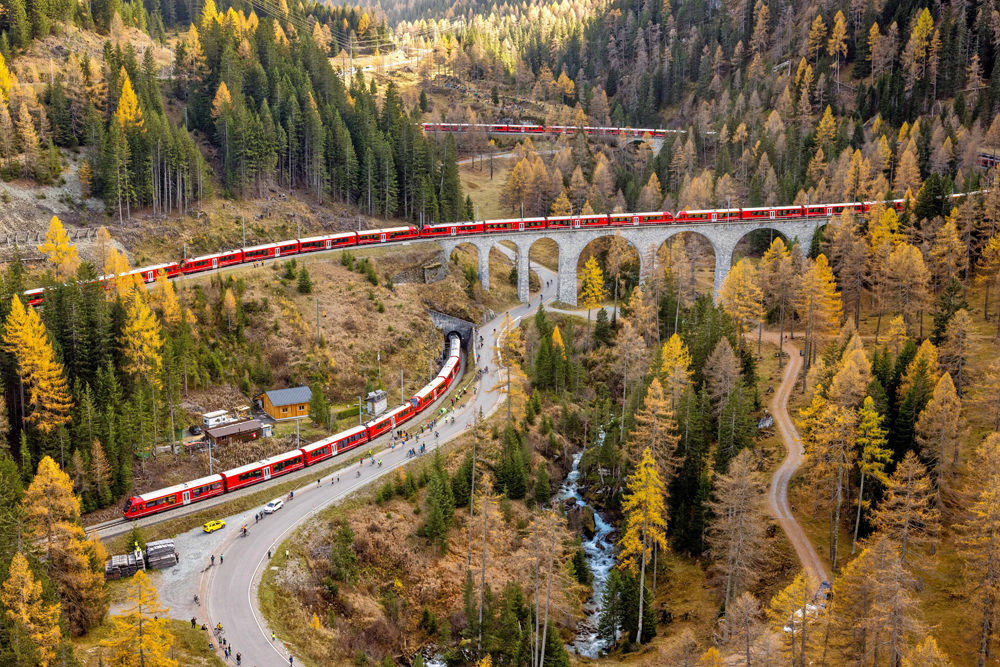







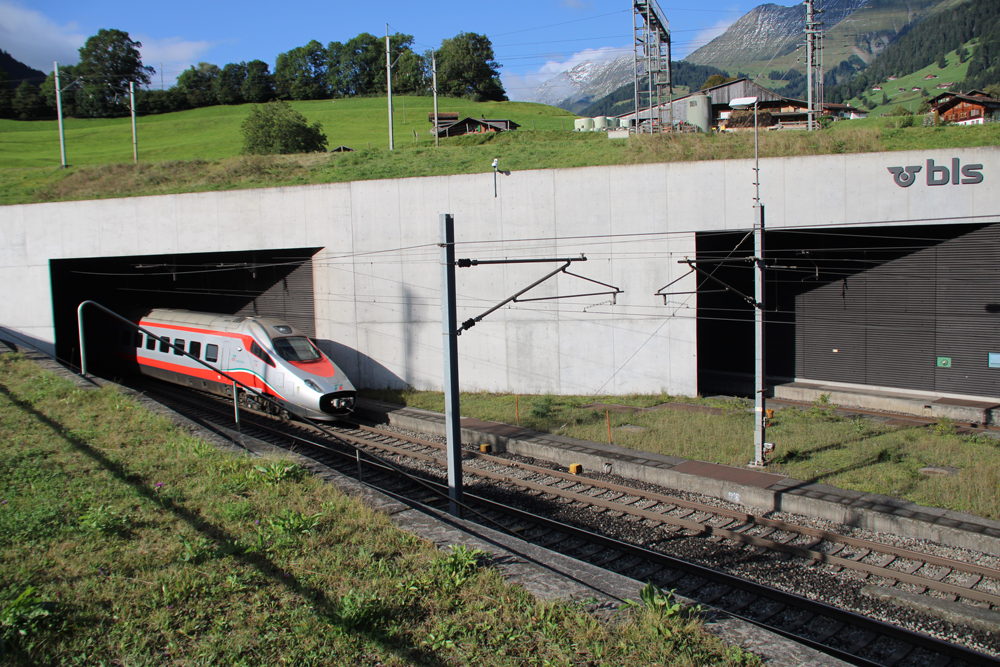
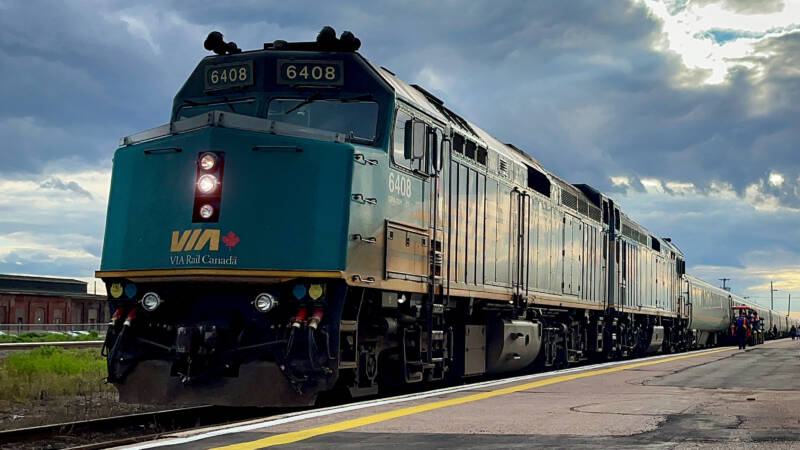
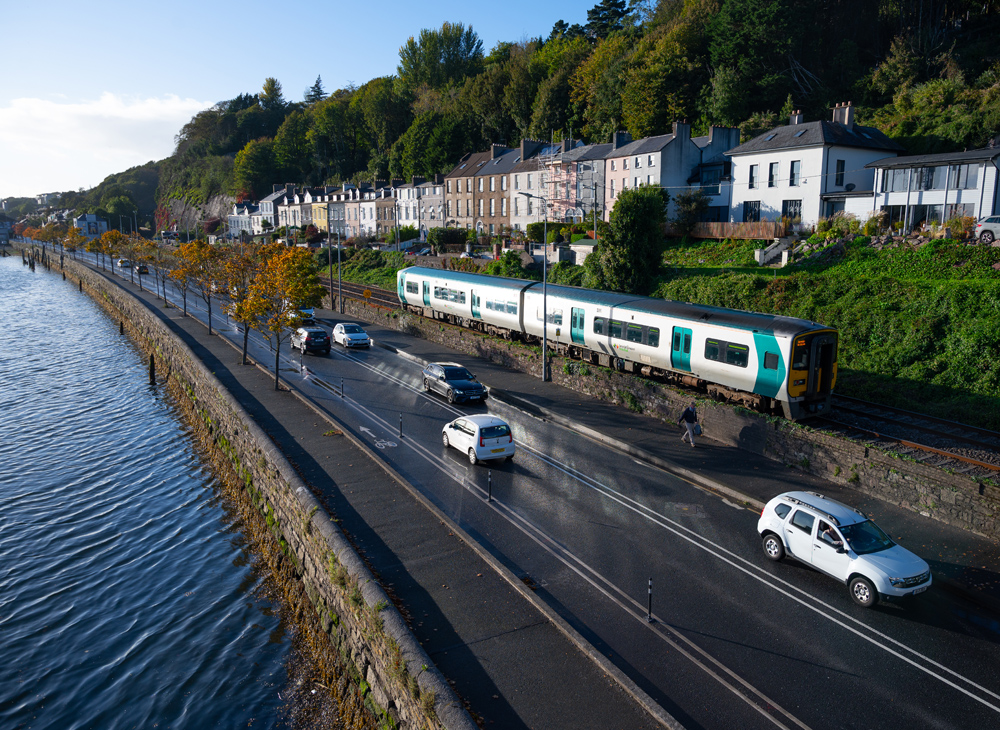




“electrical regenerative braking and generated 4000 kilowatt-hours of power.” Are they set up to use / store that amount of power? Didn’t see any trains going uphill.
Depending on RhB’s commercial to railroad conversion hardware, regenerated power can be returned to the grid. Alternately, RhB would have trains elsewhere that are going up or other narrow gauge railways could use the 11kV 16.7 Hz power. SBB uses 15 kV 16.7 Hz power.
Central European railways and Amtrak have the same problem: they have to convert commercial frequency power (in Europe 50 Hz) to low frequency railroad power (Central Europe 16.7 Hz)
It would be neat if Amtrak could try to break that record. Of course the way things are now they couldn’t put together 101 operable cars or the locomotives to pull them.
Switzerland celebrates its railways! The country has virtually every line that was ever built and almost all electrified to modern standards. Trains go virtually everywhere on hourly or more frequent departures, and postal busses serve even the smallest settlements.
If you have interest in an international trip for railfanning, Switzerland cannot be beat, and the RhB is the jewel in the crown. English is widely spoken and hotels and restaurants provide great service. There are Swiss Passes good for varying lengths of time and good throughout the country. Rhaetian Railway has their own passes, also. The SBB app is a breeze to use.
The only problem is returning home to the desolate state of US railroads and Amtrak…
The Swiss do everything right with detail, precision, order and it all works perfectly.
From Swiss watches to Swiss Army knives, Swiss banking and finance and their rail system. Americans like to brag and boast that we are the greatest nation in the world but not so when you compare what Switzerland can do and does it perfectly. The American rail system both freight and passenger is a poor cousin to the Swiss rail network.
Joseph C. Markfelder
This is a really beautiful rail trip from Chur (standard gauge connection) to St. Moritz. The Bernina Pass line from St. Moritz to Italy is great too.
However I was on a train from Milano to Zurich years ago which went into emergency in Schwyz, The conductor walked the train and evidently found nothing. We spent maybe an hour in Arth Goldau while the train was inspected again and finally got into Zurich over two hours late.
When I saw the headline, my first thought was “did they adopt PSR?”
LOL!
Everything looks in immaculate condition including the track. Amazing what a difference over there than some of the stations here and right of way here.
The trains are all brand new.
I get the impression 25 EMU sets and 100 cars are too many for MU control to pass all the way through from the head end. So the extra engineers are to operate different groups of cars.
RhB is an adhesion railway (traction by the adhesion of the wheels to the rail) rather than a rack railway (traction by a toothed wheel engaging a rack between the running rails.) It is electrified with the 61 km Bernina Line using 1000 V DC and the remaning 321 km 11 kV 16.7 Hz single phase AC. It is independent of the Swiss Federal Railway.
9
Philip – You are correct, I read elsewhere that the cars can be MU’d, but there is a limit on the number units under a single MU control. The engineers coordinated their actions through special military radios that allowed continuous contact despite the terrain.